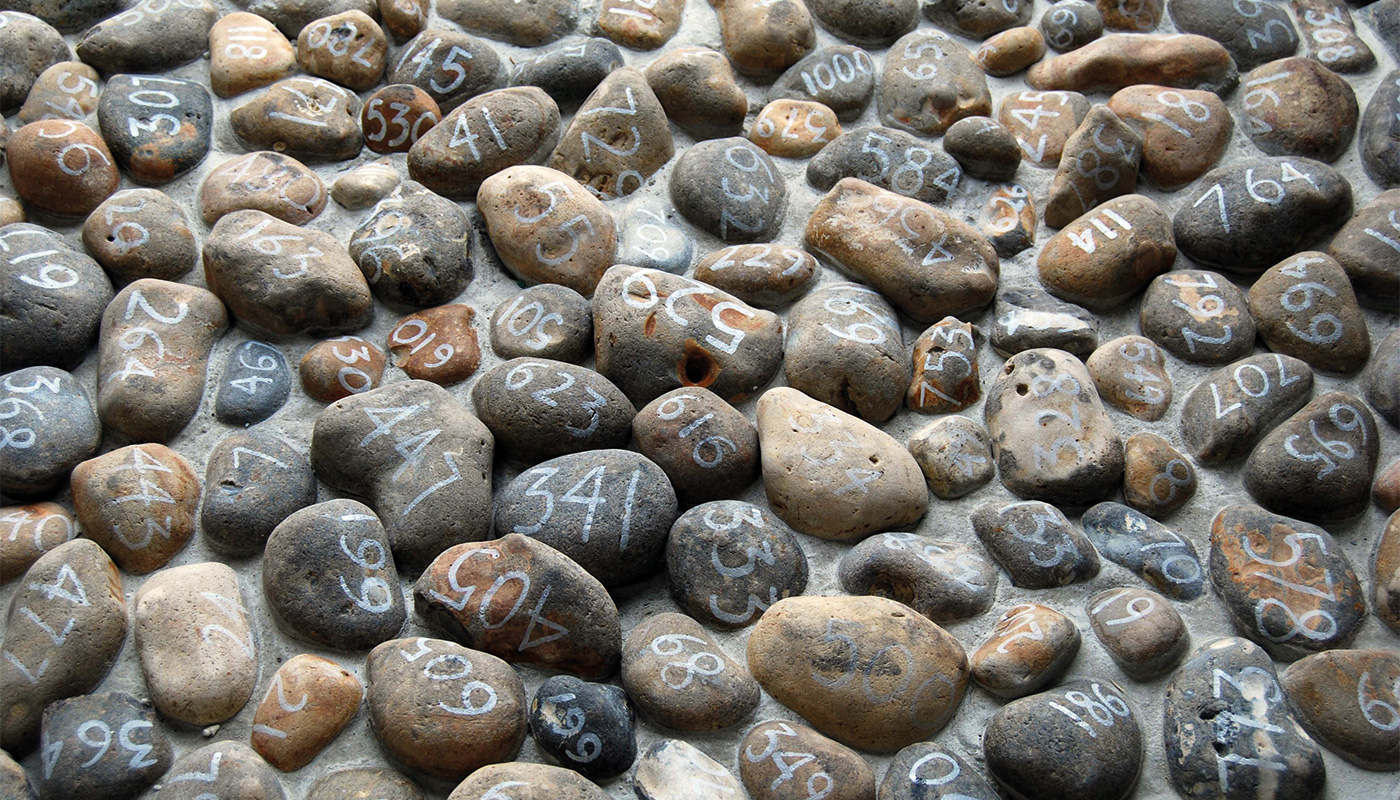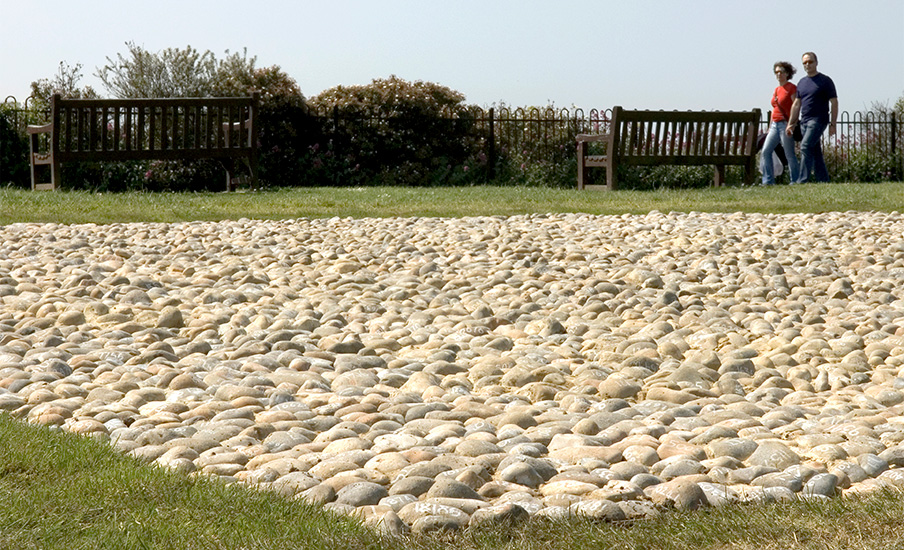Mark Wallinger
Mark Wallinger
Folk Stones, 2008
Mark Wallinger’s ‘Folk Stones’ at first appears like an almost banal numbering exercise, a “significant yet pointless act” as he puts it, recalling the labour of a modern-day Sisyphus. Yet the precise number of beach pebbles collected and laid out into a massive square reveals a profound underpinning: 19,240 individually numbered stones stand for the exact number of British soldiers killed on 1st July 1916, the first day of the Battle of the Somme.
The work is inspired by the millions of soldiers who left from Folkestone Harbour to fight on the battlefields of France and Flanders, and is located adjacent to other older war memorials. But, by using metonymy to create the idea of a crowd ‘numberless as the pebbles on a beach’, Wallinger has created a very different form of remembrance monument in which numbers replace names.
Folkestone was the main point of departure for hundreds of thousands of soldiers leaving for the battlefields of northern France during the First World War. The poet Wilfred Owen spent a night at the Metropole hotel before embarking for France, and later described its lush carpets as being as thick as the mud in the trenches. For countless other soldiers too, Folkestone must have provided some final home comforts, and its beaches and cliffs would have been the very last glimpse of England many would ever see.
Audio guide
Mark Wallinger Folk Stones, 2008. Photo by Thierry Bal.
Other Profiles
- Banksy
- Adam Chodzko
- A K Dolven
- Amalia Pica
- Antony Gormley
- Assemble
- Bill Woodrow
- Bob and Roberta Smith
- Christian Boltanski
- Cornelia Parker
- Cristina Iglesias
- David Shrigley
- Diane Dever and The Decorators
- Diane Dever & Jonathan Wright
- Gary Woodley
- Gilbert & George
- Hamish Fulton
- HoyCheong Wong, Simon Davenport & Shahed Saleem
- Ian Hamilton Finlay
- Jacqueline Poncelet
- Jonathan Wright
- Lubaina Himid
- Marc Schmitz + Dolgor Ser-Od
- Mariko Hori
- Mark Dion
- Michael Craig-Martin
- Michael Sailstorfer
- muf Architecture/Art
- Nathan Coley
- Pablo Bronstein
- Pae White
- Paloma Varga Weisz
- Patrick Corillon
- Pilar Quinteros
- Patrick Tuttofuoco
- Rana Begum
- Richard Deacon
- Richard Wilson
- Richard Wentworth
- Richard Woods
- Rigo 23
- rootoftwo
- Ruth Ewan
- Sarah Staton
- Sinta Tantra
- Sol Calero
- Spencer Finch
- Stephenie Bergman
- Strange Cargo
- Studio Ben Allen
- Tina Gverović
- Tonico Lemos Auad
- Tracey Emin
- Will Kwan
- Yoko Ono
- Winter/Hörbelt

